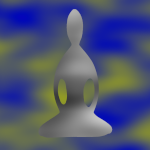Dear Friends,
So far we have explored the energy to get started (initiating effort), the way we can decide where to put our effort (right endeavor), and today, we will review what Gil calls Continuous Effort.
https://www.audiodharma.org/talks/11099
As he surmises, the phrase “continuous effort” brings up for me a tightness, a striving, a gotta-get-this-right feeling. And that is quite counter-productive when I try to have continuity.
Gil talks about being a bit relaxed about the practice – not straining too hard to get things right all the time.
He says, “Of course there are difficulties as we meditate. Then the effort can be how to not be troubled by the difficulty — how to not get reactive, constricted, tight, or self-critical around the difficulties. The effort is to find how to be in a way that is more at ease, less stressed. Right endeavor is not a problem; it’s actually settling and freeing.”
Then as some continuity develops, “we find that it is nourishing to be engaged.”
Instead of “continuous effort,” Gil offers alternatives of “persistently relaxed” or “relaxed persistence,” which he describes as “continuity of effort that is at ease, relaxed, and is built into how we are aware.” That last bit about this being how we are aware helps me let go of some of the striving in this way.
The mind wanders, then settles back, over and over, and each time, “we are decreasing the amount of fuel that keeps our thinking active. The amount of fuel that we decrease might be imperceptible, but if we do it a hundred times in a session of meditation, it makes a difference.”
At the beginning, it takes a little work, and Gil says, “This is supported by feeling the goodness of it.” Instead of being too critical, “we delight in our capacity to be aware, and appreciate the value of being real.”
This summer, I had the good fortune to take the Mindfulness of Breathing course through BCBS – this course was focused on the practice as outlined in the Ānāpānasati-sutta. What I love about the teaching and writing of Venerable Anālayo on this topic is the invitation to pay attention to “that subtle pleasant feeling of being in the present moment”. Similar to Gil’s talk, Venerable Anālayo says, “That is what empowers our ability to stay with the breath. Breath as such is neutral; mind easily wanders. But by joining the breath to the pleasant feeling of being in the present moment, it becomes so much easier for the mind not to wander away.”
Even though I have had many teachers say the same thing many times, for some reason, Venerable Anālayo’s presentation found its way into my practice, and accessing that subtle pleasantness has made a big difference in my ability to stay more “persistently relaxed” in meditation. (Of course, this is still a work in progress!)
Reflection:
You may already be familiar with some form of “relaxed persistence” – Gil mentions things like playing a sport or a musical instrument – others might experience it in art or in nature – where the effort to do an activity isn’t like work but more like delight in being able to do it. If you can bring something to mind, notice if there’s a sense of what that delight feels like in the body. That might help you recognize any subtle delight that arises in your meditation practice.
Meditation:
The first week’s instructions in the Mindfulness of Breathing course focused on “the preliminaries” of getting settled to start to practice, and I find it a useful structure to follow in any meditation. You can find the meditation on the BCBS site:
Mindfulness of Breathing 1 (Venerable Anālayo, 14 minutes, no ending bell):
https://www.buddhistinquiry.org/resources/offerings-analayo/breathing-audio/
With good wishes,
Andrea
